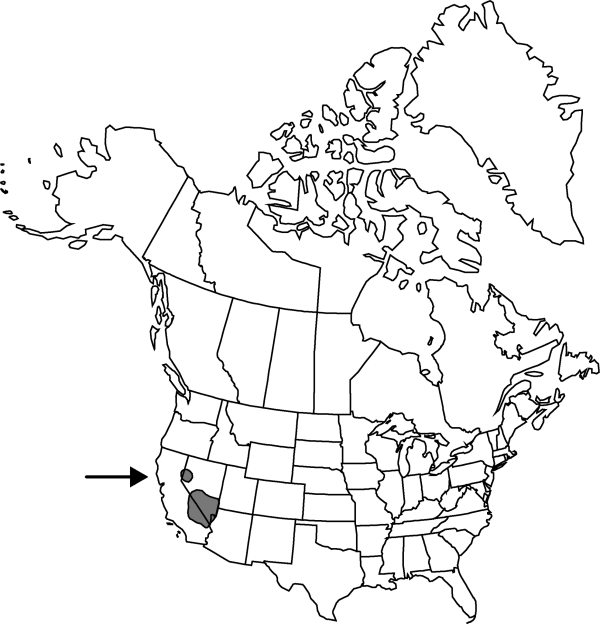Opuntia polyacantha var. erinacea
Cact. Succ. J. (Los Angeles) 70: 188. 1998.
Stem segments elliptic to obovate, (7–) 10–20 × 5–10 cm; areoles 8–14 per diagonal row across midstem segment, 12–17 mm apart. Spines 1–18 per areole, in essentially all areoles, grading in size and orientation, yellow to dark-brown, turning gray, pink-gray, or gray-brown, the longest spreading and curling in all directions especially on proximal stem segments, usually ascending and ± straight near stem segment apex, deflexed to reflexed near base, (35–) 40–90 (–185) mm, spines of older stem segments more numerous, less straight, and reflexed. Fruits stout; areoles 20–33, each bearing 7–13 spines, 8–20 mm. 2n = 44.
Phenology: Flowering late spring.
Habitat: Deserts, desert grasslands, juniper woodlands, alluvial, sandy or gravelly soils
Elevation: 1000-1400 m
Distribution

Ariz., Calif., Nev., Utah.
Discussion
Plants of Opuntia polyacantha var. erinacea with very long, wavy hairlike spines have been treated as O. ursina or O. erinacea var. ursina. Such plants, however, occur at the original (type) locality for var. erinaceae, and the characteristic spines may appear on the oldest stem of otherwise straight-spined plants. The name Opuntia erinacea has been widely misapplied to some plants of other varieties of O. polyacantha.
Selected References
None.
Lower Taxa
"longest" is not a number.